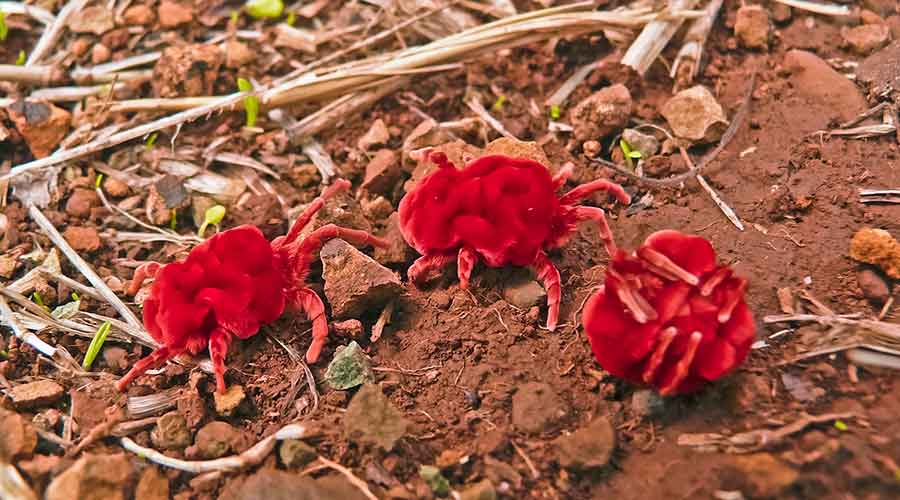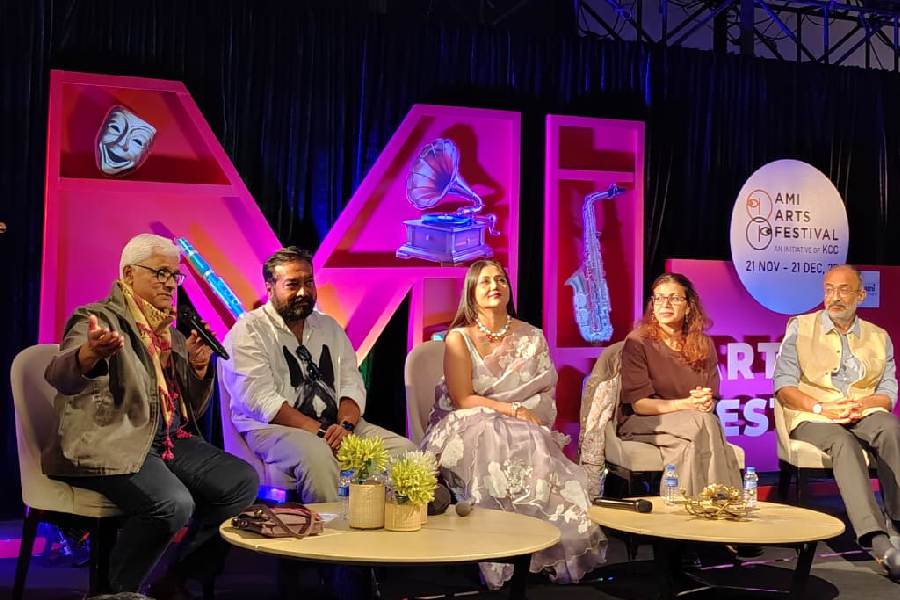We used to call them Choti-Moti, those red, velvety insects that appeared in the gardens of Kharagpur where we lived as children. They came out of the soil after the rains, their puffed little bodies and endearing gait making a pretty picture in the grass.
When we picked them up, they folded their feet in and lay motionless. Then we’d whisper a magic spell that made them open up, or so we believed. “Choti-Moti, birwa moti... lal darwaza khol de, khol de…” And in a few seconds, the bugs would start crawling all over our palms and fingers.
It has been decades since we left Kharagpur, and I have often looked for those velvety things — in people’s gardens, whenever possible. I was beginning to be sure they had vanished from the surface of the earth or had slid into the endangered box.

The pretty little thing finds mention in our ancient texts too. In Sanskrit, it has a rather imperious sounding name — beerbahuti. In the north, it’s often called bhagwan ki budiya.
Imagine my surprise then, when a few days ago an elderly gentleman said, “Just because you have not seen them doesn’t mean they’re no more.” He sounded annoyed, and why not. He is a custodian at the Entomological Society of India at Pusa.
Their existence mattered to some people. The other day a colleague said, “You actually noticed those insects and remembered them too!” I was telling her how not finding them had become a nagging thought in my head.
“We collect them regularly for sampling,” said Dhriti Banerjee, the new director of the Zoological Survey of India. “Trombidiidae is found in humid, nutritious environments. You can see it commonly on the aals — pathways between paddy fields.”
Then the facts came tumbling out. The pretty little thing finds mention in our ancient texts too. In Sanskrit, it has a rather imperious sounding name — beerbahuti. In the north, it’s often called bhagwan ki budiya.
It has commercial importance too — it’s used to make Unani and homoeopathy formulations. In Chhattisgarh, where it’s called ranikeeda, it’s used to make an oil for treating paralysis.
Homoeopathy even has a concoction called Trombidium, said Banerjee; it’s used in diarrhoea and liver ailments. Traditional healers use it to treat male infertility or as a tonic for new mothers for general health.
“They also have a potential role in biological control,” said Banerjee. “The larva of this insect feeds on the aphids found on cotton plants... but this hasn’t found implementation yet.”
Truly, bugs can be some of the most intriguing things, if only for their striking appearances.
“There’s still so much diversity left in our land,” said Banerjee. “If we can preserve it, we will have something to be proud of later on.” In case this matters, India has two per cent of the world’s landmass but almost eight per cent of all recorded species.
The nagging thought has been put to rest; my Choti-Moti is thriving. Someday I shall whisper the magic words, and it will once again do my bidding.










